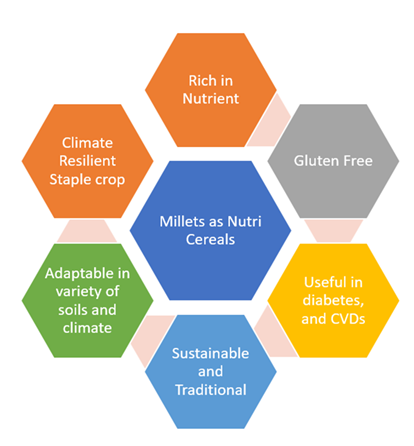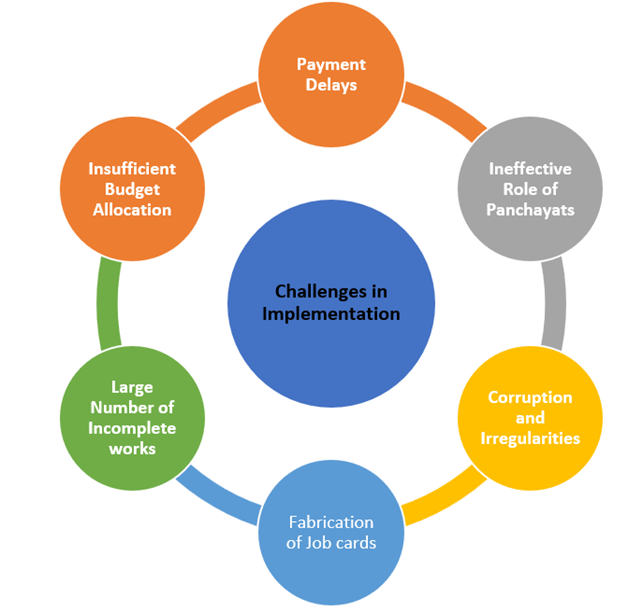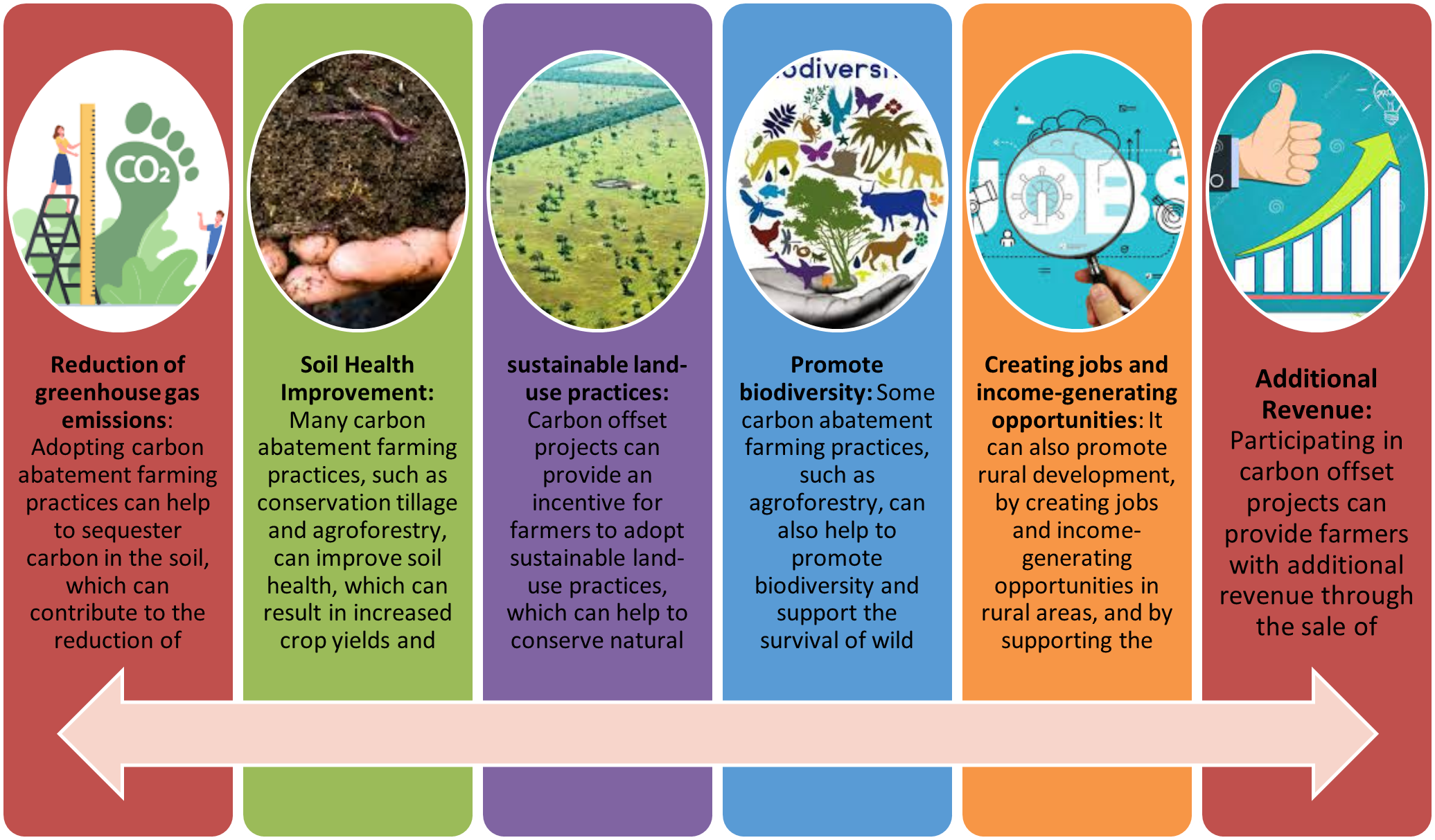Monday, 6th February 2023
Solar energy is not the best option for India
Exam View: Clean Energy, Solar waste, International Solar Alliance, National Solar Mission, PM-KUSUM, Solar Energy and Development in India, Challenges Related to Solar Energy, Government Schemes to Enhance Solar Energy Production in India
In News: Solar energy is not the best option for India. The country should not give up on large hydropower and coal projects.
India, being a tropical country is endowed with plenty of solar energy; hence, the exploitation of solar energy becomes an important component of the renewable energy sector. Karnataka leads India’s list of states producing solar energy, with a total installed solar power capacity of about 7,100MW; followed by Telangana, Rajasthan, Andhra Pradesh, and Gujarat. India is the fourth-largest solar power producer in the world.
India has been aggressively pushing towards a more sustainable future by investing heavily in renewable energy sources, with solar energy at the forefront of its efforts. The Government of India has set the target to expand India’s renewable energy installed capacity to 500 GW by 2030.
External pressure is pushing India more and more into the so-called carbon-limiting renewable energy path, along with a simple understanding that solar energy is a free gift from the sun, which has encouraged over-reliance on solar energy in the country. But solar energy is not the best option for India, and it is better off just relying on large hydro and coal.
Misconceptions about Solar Energy:
- One argument put forth in favor of solar power is that the levelised cost of power is coming down and is close to that of coal. There are two flaws:
- Wrong comparison:
- The first flaw is the wrong comparison of solar power with coal electricity at the load center, instead of at the pithed, which costs about half that of the load center.
- According to the Central Electricity Authority, which was once the final arbiter in electricity matters, moving electricity through high voltage wires is cheaper than moving coal — and that is the reason for starting the National Thermal Power Corporation Limited (now NTPC Limited).
- Not comparing like with like:
- Solar electricity is intermittent and coal electricity is continuous. So, you have to add the cost of storage by battery.
- Protagonists of solar power will want us to add the environmental cost of carbon to coal — for its greenhouse gas emissions — but now the carbon market has crashed and is in that state for years; one does not have any objection to adding its market price.
- The shadow price or true economic value of coal is even lower than its market price since the cost of labor in mining carries a shadow price of zero (they being unskilled workers who would be unemployed otherwise).
Benefits of Solar Energy:
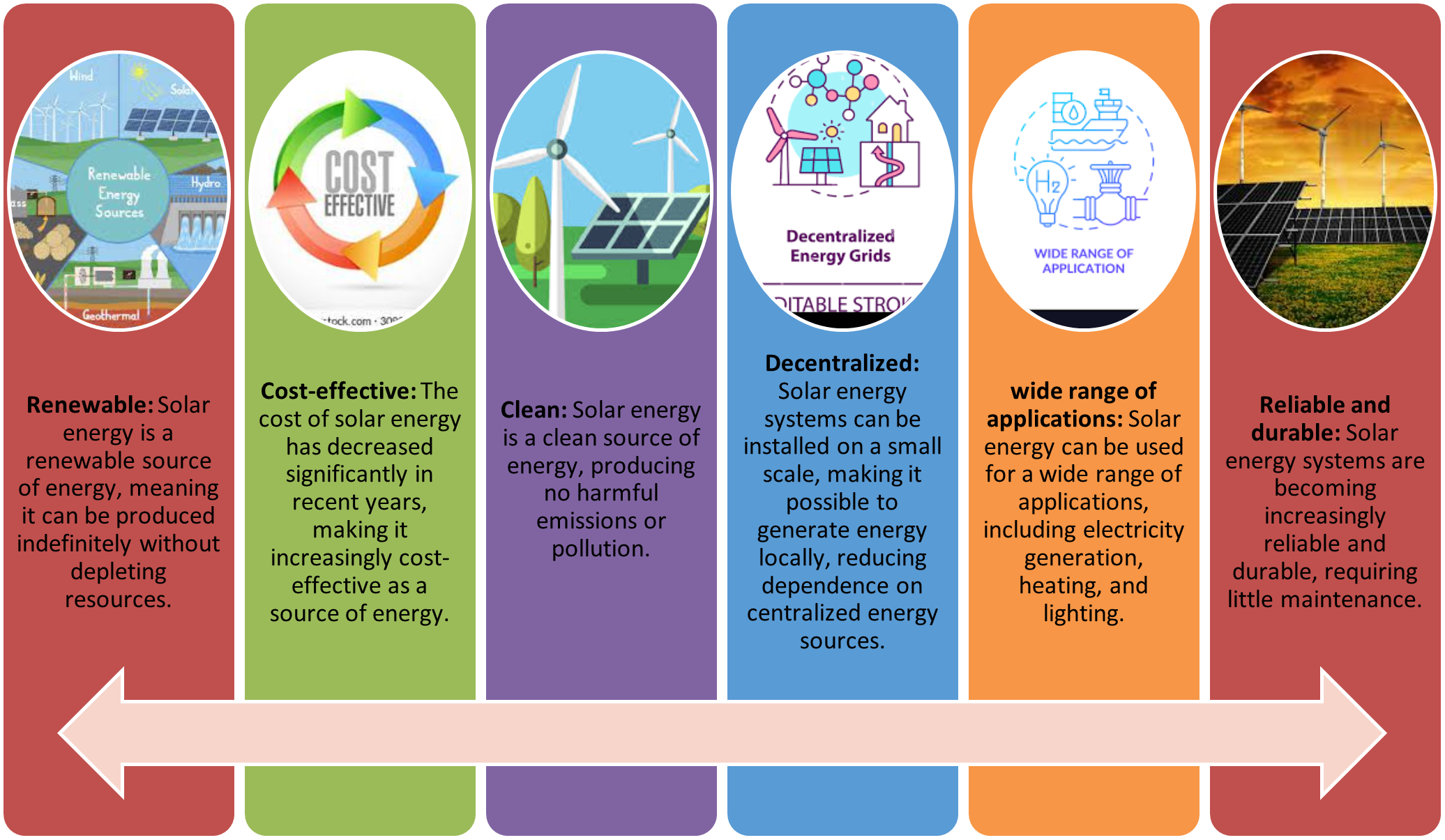
Challenges with Solar Energy in India
- High Initial Costs: Despite recent reductions in the cost of solar panel technology, the upfront cost of installation remains high, which can be a barrier to adoption for many households and businesses.
- Lack of adequate infrastructure: Lack of R&D, modern development facilities, and manufacturing infrastructure impact the development of solar panels, equipment, and inverters to meet complete demand.
- Financial Constraints: Access to finance for renewable energy projects can be limited, particularly for smaller and rural projects, which can make it challenging for individuals and organizations to invest in solar energy.
- Poor maintenance and operation: Poor maintenance and operation of solar power systems can reduce their efficiency and effectiveness, which can impact the long-term viability of renewable energy projects in India.
- Land Availability: Finding suitable land for large-scale solar projects can be a challenge in India, particularly given competing demands for land for other purposes such as agriculture and urban development.
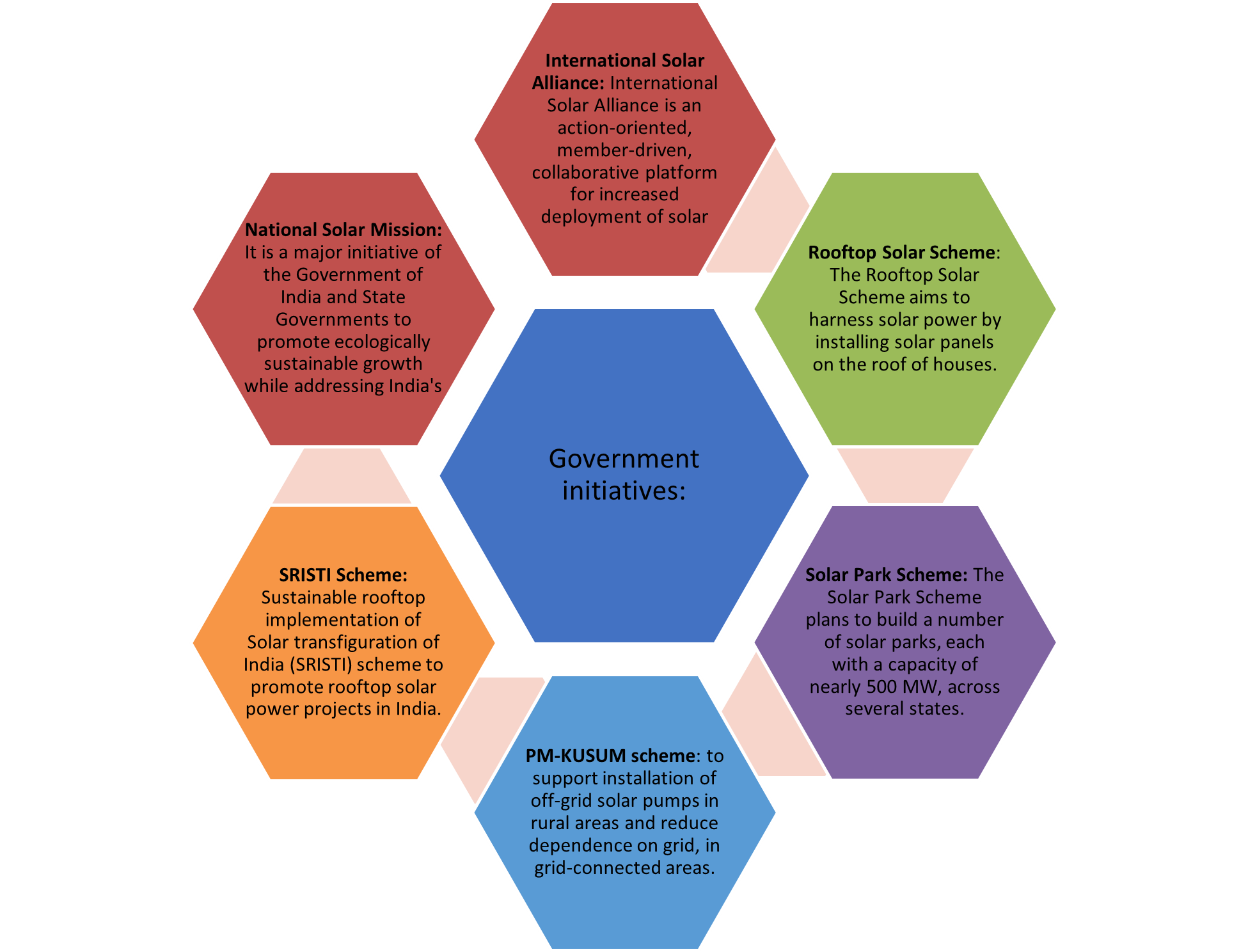
https://www.thehindu.com/opinion/op-ed/solar-energy-is-not-the-best-option-for-india/article66455016.ece/amp/
Risks of vaccine-derived Polio
In News:
- World Health Organisation (WHO) report warns against high risks of the global spread of vaccine-derived polio.
About the News:
- At the 34th meeting of the emergency committee on the international spread of poliovirus, WHO warns against the global spread of poliovirus which remains a public health emergency of international concern.
- The panel reviewed data on WPV1 and cVDPV from Afghanistan, Botswana, Canada, DRC, Indonesia, Madagascar, Nigeria, Pakistan, Sudan, and Zambia
Major findings:
- WHO recommends declaring poliovirus transmission as a national public health emergency and ensuring vaccinations for travelers and
- The findings were based on the data on wild poliovirus (WPV1) and circulating vaccine-derived polioviruses (cVDPV) for the global target of WPV eradication and cessation of cVDPV2 outbreaks by 2023
- Several countries have reported climate-related disasters causing vulnerability to disease outbreaks, including polio.
- Increase in wild poliovirus cases in 2022 shows the fragility of the fight against the disease, especially in the aftermath of the ongoing conflict in several polio-affected countries.
- Risk of international spread of cVDPV2 remains high despite declining cases and lineages
- Major risks are associated with inaccessibility, insecurity, high concentration of zero-dose children, and population displacement.
- The WHO has however reiterated that the Novel oral polio vaccine and re-introduction of the trivalent oral polio vaccine (tOPV) are expected to mitigate risks.
- Only three genetic clusters of WPV1 globally in the countries viz., Pakistan, Afghanistan, and Africa.
- The report pointed out that there are no confirmed cases of WPV1 in Pakistan and Afghanistan since mid of 2022.
- Four cases of WPV1 in Mozambique with the most recent in Tête province in 2022 while no further cases of WPV1 in Malawi since 2021.
Polio
- Poliomyelitis, commonly called polio is a highly infectious disease, caused by the poliomyelitis virus.
- The vast majority of poliovirus infections do not produce symptoms, but 5 to 10 out of 100 people infected with polio may have some flu-like symptoms.
- The virus destroys parts of the nervous system, causing permanent paralysis in the legs or arms.
- Despite efforts to eradicate it, there continue to exist children with permanent paralysis due to this virus in some Asian countries.
- Because of the risk of importation, the main risk factor for children under 5 years of age to acquire this disease is low vaccination coverage.
- Polio can be prevented through vaccination. There are two types of polio vaccines:
- Inactivated Polio Vaccine (IPV): This vaccine contains dead poliovirus and is given by injection. It provides long-lasting protection against all three types of poliovirus.
- Oral Polio Vaccine (OPV): This vaccine contains weakened live poliovirus and is given by mouth. It provides excellent protection against all three types of poliovirus, but in rare cases, it can cause the vaccine-derived poliovirus.
- At present, there is no cure for polio once it has infected an individual, but its effects can be managed through physical therapy, braces, and vaccinations.
|
Different schemes for curing Polio |
|
https://www.downtoearth.org.in/news/health/global-spread-of-vaccine-derived-polio-still-a-high-risk-who-87473
Resilience In Revenue Budgeting
In News
As per the Economic Survey 2022-23, the resilience in the fiscal performance of the Union Government, despite additional fiscal pressures like the Pandemic outbreak and Russia-Ukraine conflict during the year, is visible as the government is on track to achieve the budget estimate for the fiscal deficit in FY23.
About the News
- The resilience in the fiscal performance of the Union Government has been facilitated by
- The recovery in economic activity,
- Buoyancy in revenues from direct taxes and GST, and
- Realistic assumptions in the Budget.
- Due to the above reasons, the Union government witnessed a reduction in its fiscal deficit (FD) as a percent of GDP.
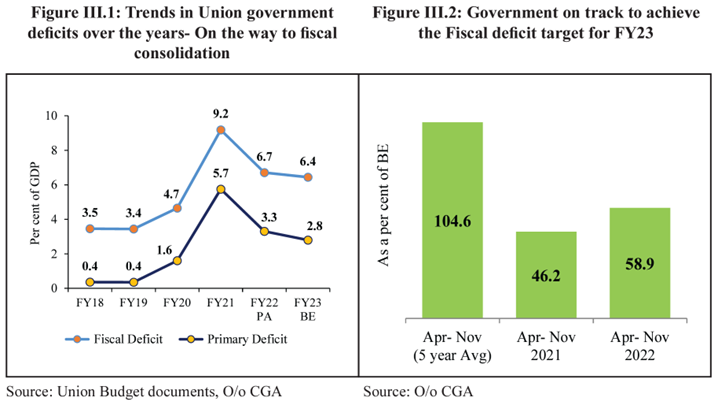

How was the performance of the Union Government’s Revenue Receipts?
- The Union government's non-debt receipts comprise revenue receipts (tax and non-tax) and non-debt capital receipts.
- After plummeting during the pandemic-affected year FY21, revenue receipts registered robust growth in FY22 PA, both on a YoY basis and to the pre-pandemic year FY20.
- Structural reforms that helped:
- Introduction of GST and
- Digitalisation of economy
- Administration measures that helped:
- Faceless Assessment and Appeal,
- Assistance to taxpayers in getting familiar with the systems,
- Generation of e-way bills under the GST system, and
- Information sharing between government departments among others.
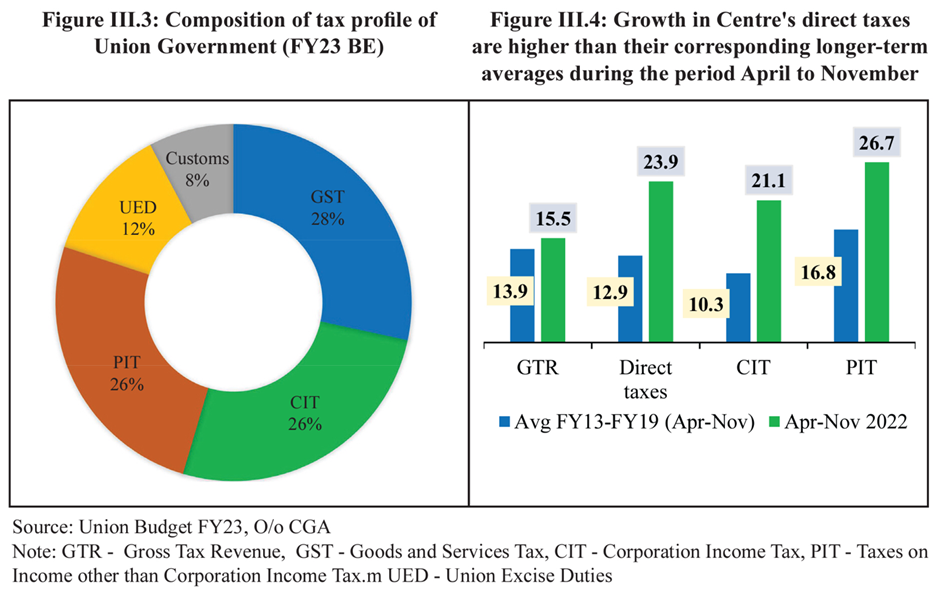
- Direct taxes are propelling the growth in GTR.
- Customs and Excise duties act as flexible policy tools while direct taxes safeguard revenue buoyancy, especially in the pandemic response.
- When the collection of direct and indirect taxes was adversely impacted during the pandemic year FY21, and low global oil prices created some elbow room for raising taxes on petroleum, the government raised the excise duty on petrol and diesel to augment the revenue pool.
- Subsequently, when other taxes recovered and inflationary pressures built up in the economy, the government reduced the excise duty in November 2021 and May 2022.
- High imports during the current year have led to a 4% YoY growth in customs collection from April to November 2022.
- Goods and Services Tax (GST) has stabilized as a vital revenue source for central and state governments. The improvements are due to the:
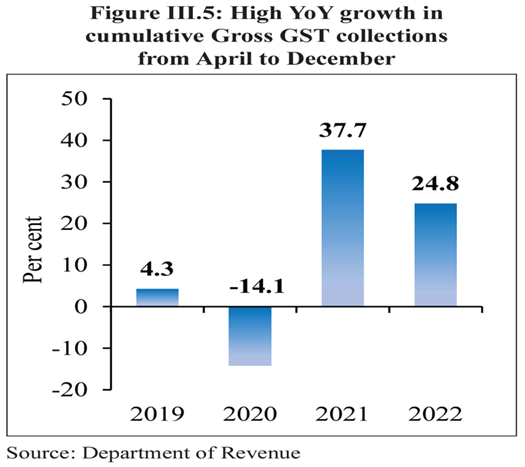 Rapid economic recovery post-pandemic,
Rapid economic recovery post-pandemic,
-
- Nationwide drive against GST evaders and fake bills,
- Various rate rationalization measures were undertaken by the GST Council to correct the inverted duty structure.
- GST net has also doubled to more than 1.4 crore GST taxpayers in 2022.
- GST has led to better reporting of income.
- Non-Tax Revenue Receipts
- Budget FY23 envisaged a lower collection of non-tax revenue receipts during the current year relative to FY22.
How was the performance of the Union Government’s Revenue Expenditure?
- In the last few years, countercyclical fiscal policy measures have been adopted.
- The total expenditure of the Union Government in FY21 rose to 17.7% of GDP, higher than the previous 5-year average of 12.8% of GDP.
- Geopolitical developments stretched the Revenue Expenditure requirements.
- Revenue expenditure is committed and allows limited flexibility.
- Re-prioritising expenditure and rationalizing subsidies are essential tools to stimulate aggregate demand and fulfill redistributive imperatives.
- With the winding up of the pandemic-related support,
- Revenue expenditure was brought down from 15.6% of GDP in the pandemic year FY21 to 13.5% of GDP in FY22 PA.
- Subsidy expenditure was brought down from 3.6% of GDP in FY21 to 1.9% of GDP in FY22 PA.
- Due to the sudden outbreak of geopolitical conflict
- Subsidy requirements for food and fertilizer became essential under Pradhan Mantri Garib Kalyan Anna Yojana (PMGKAY).
- As a result, the revenue expenditure from April to November 2022 has grown by over 10% on a YoY basis.
Interest payments, as a proportion of receipts, went up after the pandemic outbreak. However, in the medium term, buoyancy in revenues, aggressive asset monetization, efficiency gains, and privatization would help pay down the public debt.
SEBI Guidelines: Green Bond Do's & Don'ts
In news
- In order to address the concerns of market participants, regarding greenwashing, the SEBI has issued a list of Dos and Don’ts for issuers of green debt securities to avoid the occurrence of greenwashing
About
Green bond
- A green bond is a fixed-income instrument designed to support specific climate-related or environmental projects.
- Green bonds may come with tax incentives to enhance their attractiveness to some investors.
- They are also called “climate bonds” or “sustainable bonds.”
- Green bonds are part of a larger trend in socially responsible and environmental, social, and governance (ESG) investing.
- However, concerns are raised about the potential misuse of green bonds for greenwashing. The UN Secretary-General also deterred misuse of greenwashing during COP 27.
Greenwashing
- In simple words greenwashing means encouraging misleading and falsified information about the sustainability of a product, service, or business.
Do’s and Don’ts for issuers of Green bonds by SEBI
- Continually assess if operations are environmentally friendly and reduce their negative effects.
- Should not showcase environmentally friendly practices by using deceptive labeling, hiding trade-offs, or selectively using research findings.
- Shall quantify negative externalities associated with the utilization of the funds raised through green bonds.
- Shall not make untrue claims giving a false impression of certification by a third-party entity.

https://www.taxmann.com/research/company-and-sebi/top-story/104010000000102336/sebi-lists-out-dos-and-donts-for-issuers-of-green-debt-securities-to-avoid-occurrences-of-greenwashing-cirnot
PACS To Provide Services Offered By CSC
In News: A Memorandum of Understanding (MoU) was signed between the Ministry of Cooperation, Ministry of Electronics and Information Technology, NABARD, and CSC e-Governance Services India Limited for Primary Agricultural Credit Societies (PACS) to start providing services like the ones offered by Common Service Centres (CSC).
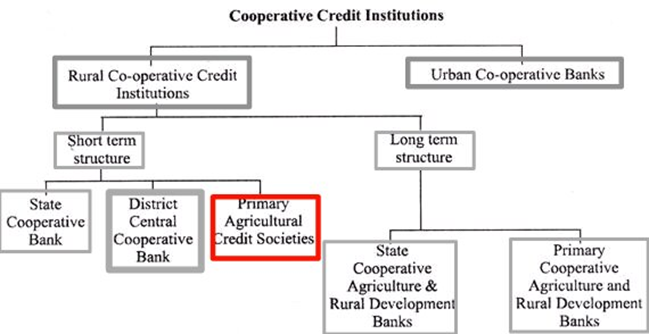
About PACS:
|
Definition |
|
|
Role |
|
|
Constitutional status |
|
|
Benefits of the new changes |
|
Source:
https://indianexpress.com/article/india/pacs-services-common-service-centres-cooperation-ministry-signs-mou-8421107/
Smuggling of Red Sanders - Edukemy Current Affairs
In News: CITES report highlights rampant smuggling of Red Sanders from India between 2016 and 2020.
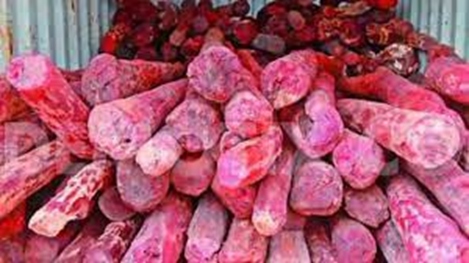
Key findings:
- Red Sanders(scientific name Pterocarpus santalinus), also known as Red Sandalwood, is found in the southern tropical dry deciduous forests of Andhra Pradesh and reaches an average height of 10-15 meters.
- Heartwood of Red Sanders is used in furniture, handicrafts, and musical instruments in the domestic and international markets.
- The red dye obtained from the tree is used as a coloring agent in the textiles, medicine, and food industries.
- China is the largest importer of illegally harvested Red Sanders logs, accounting for 53.3% of total exports followed by Hong Kong (5,215 tons) and Singapore (216 tons).
- The species is listed as Endangered by IUCN and falls under Appendix II of CITES, and is enlisted under Schedule IV of the Wildlife (Protection) Act in India.
- Import of Red Sanders is prohibited and export is restricted under India's foreign trade policy.
- Illegal logging and smuggling of Red Sanders are rampant in Chittoor, YSR Kadappa, Nellore, and Kurnool districts of south India.
https://www.downtoearth.org.in/news/wildlife-biodiversity/about-20-000-tonnes-of-red-sanders-were-smuggled-from-india-between-2016-and-2020-report-87458
Mahila Samman Saving Certificate Scheme
In News: Ministry of Finance launches a new small savings scheme for women and girls in the Budget 2023-24.
Important features:
|
Components |
Features |
|
Government-Backed Scheme |
|
|
Eligibility |
|
|
Interest Rate |
|
|
Deposit Limits |
|
|
Tenure |
|
|
Premature Withdrawal |
|
|
Tax Benefits |
|
https://economictimes.indiatimes.com/wealth/invest/new-small-savings-scheme-for-women-mahila-samman-saving-scheme-launched/articleshow/97516485.cms
PVTGs Development Mission - Edukemy Current Affairs
In news
- Under the Union Budget 2023, 15,000 crore will be made available to implement the PGTV Development Mission in the next three years under the Development Action Plan for the Scheduled Tribes.
About
- It is one of the seven Saptarishi priorities enlisted in the Union Budget.
- This will saturate PVTG families and habitations with basic facilities such as safe housing, clean drinking water, and sanitation.
- Improved access to education, health, nutrition, road, and telecom connectivity, and sustainable livelihood opportunities shall be aimed under this program.
|
Saptarishi: Union Budget 2023-24
|
|
PVTGs
Some PVTGs recently mentioned in the news |
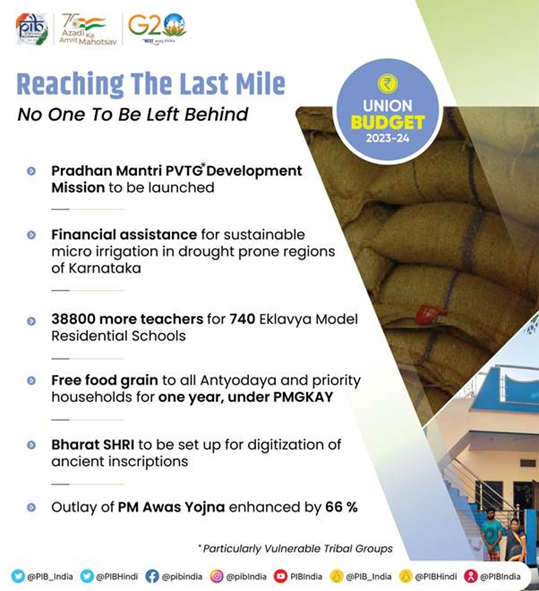
https://pib.gov.in/PressReleasePage.aspx?PRID=1895298
Project ELLORA - Edukemy Current Affairs
In news
- Microsoft’s Project ELLORA (Enabling Low-Resource Languages) is helping minor languages like Gondi, and Mundari becomes eloquent for the digital world.
About
- ELLORA-a program for enabling low-resource languages through Natural Language Processing, Conversation, and Speech technology was established at Microsoft with the view to address the needs and aspirations of language users currently unable to access such technologies.
- ELLORA aims to impact underserved communities by enabling language technology by creating economic opportunities, building technological skills, enhancing education, and preserving local languages and cultures for future generations.
- The approach taken is to start with the low-resource languages of India and then scale it to the low-resource languages in the rest of the world.
Gondi language
- Language family: South-central Dravidian language
- Region: Madhya Pradesh, Maharashtra, Chhattisgarh, Andhra Pradesh, and Telangana
- Script: It is written right to left (like Urdu)
Mundari language
- Language family: Austroasiatic language
- Region: Jharkhand, Odisha, and West Bengal
- Script: Mundari Bani (by Rohidas Singh)
Idu Mishmi
- Region: Dibang Valley of Arunachal Pradesh
- It is an endangered
https://indianexpress.com/article/technology/how-microsofts-project-ellora-is-helping-small-languages-like-gondi-mundari-become-eloquent-for-the-digital-world-8413587/
Paris Club To Help Sri Lanka Out
In News: The Paris Club, an informal group of creditor nations, will provide financial assurances to the International Monetary Fund on Sri Lanka’s debt.
About Paris club:
- The Paris Club is a group of mostly western creditor countries that grew from a 1956 meeting in which Argentina agreed to meet its public creditors in Paris.
- Objective: To find sustainable debt-relief solutions for countries that are unable to repay their bilateral loans.
- Members: It has 22 permanent members.
- These 22 are members of the Organisation for Economic Co-operation and Development (OECD).
- The members are Australia, Austria, Belgium, Brazil, Canada, Denmark, Finland, France, Germany, Ireland, Israel, Italy, Japan, Korea, Netherlands, Norway, Russian Federation, Spain, Sweden, Switzerland, United Kingdom, United States of America.
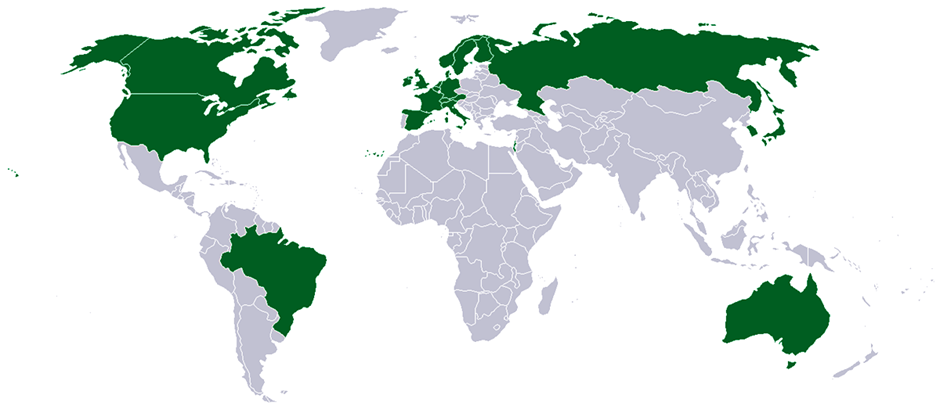
- Secretariat: Paris, France.
- Financial Mechanism: It operates on the principles of consensus and solidarity.
- Any agreement reached with the debtor country will apply equally to all its Paris Club creditors.
- A debtor country that signs an agreement with its Paris Club creditors, should not then accept from its non-Paris Club commercial and bilateral creditors such terms of treatment of its debt that are less favorable to the debtor than those agreed with the Paris Club.
- Prevalence of the club: The Paris group countries dominated bilateral lending in the last century, but their importance has receded over the last two decades or so with the emergence of China as the world’s biggest bilateral lender.
- Sri Lanka’s Case: An assurance from the Paris Club, as well as other bilateral creditors, is one of the conditions that Sri Lanka has to fulfill for the IMF to begin disbursing a $2.9 bn bailout package to the nation that faced a twin balance sheet crisis and almost collapsed last year.
- China, Japan, and India are its largest bilateral creditors.
- Sri Lanka’s debt to China is 52% of its bilateral debt, 19.5% to Japan, and 12% to India.
- With Japan a member of the Paris Club, Sri Lanka needed assurances from China and India as well.
- India launched its own bilateral negotiations with Colombo, separate from the Paris Club, and provided financial assurances to the IMF.
- China’s EXIM Bank offered a two-year moratorium on its loans.
Source:
https://indianexpress.com/article/explained/everyday-explainers/imf-sri-lanka-debt-paris-club-meaning-8421521/
Cytotoxin - Edukemy Current Affairs
Why in news? Scientists have traced the mechanisms of the toxic action of cobra venom.
About:
- This will help in developing strategies for the application of antivenom or small molecule inhibitors which can help mitigate the local toxic effects of cobra venom retained at the bite site.
About Cytotoxin:
- Cytotoxins (CTXs), an essential class of the non-enzymatic three-finger toxin family, are ubiquitously present in cobra venoms.
- CTXs are also responsible for depolarizing neurons and heart muscle membranes.
https://dst.gov.in/current-insight-mechanisms-cobra-venom-cytotoxins-can-help-anti-venom-therapy
Angel tax - Edukemy Current Affairs
Why in news? The government has proposed to bring foreign investors under the ambit of the angel tax which hitherto applied to Indian residents.
About:
- It was introduced in 2012 and is levied on the capital raised by startups from angel investors.
- It aims to deter the generation and use of unaccounted money through the subscription of shares of a closely held company at a value that is higher than the fair market value of the firm's shares.
- Angel investors are wealthy private investors focused on financing small business ventures in exchange for equity.
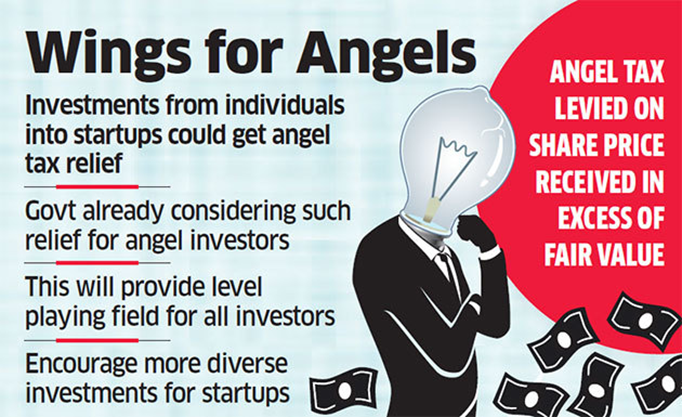
https://indianexpress.com/article/explained/explained-economics/why-proposed-change-in-angel-tax-has-rattled-indian-start-ups-8420839/
Radon - Edukemy Current Affairs
Why in news? Recently, Radon Indian Institute of Science (IISc) researchers have found hazardous radioactive radon to be present in the air and water on the outskirts of Bengaluru.
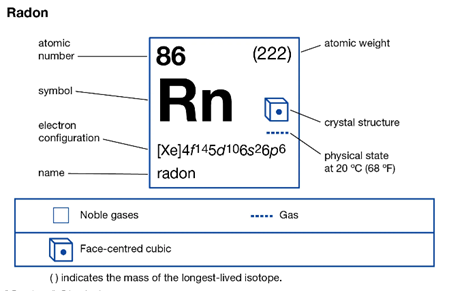
About:
- Radon was first detected as an emission from the radioactive decay of radium.
- Radon is an odorless, inert, invisible, radioactive gas and is naturally released from rocks, soil, and water.
- Radon derives naturally from uranium through radioactive transformation, as it undergoes radium decay before it is transformed into a chemically reactive atom.
- The presence of radon in air and water leads to damage of lung tissues, threatening cancer of the lungs while the presence of uranium affects the urinary tract, leading to kidney cancer, etc.
https://www.newindianexpress.com/states/karnataka/2023/feb/04/bengaluru-outskirts-have-high-levels-of-radioactive-radon-in-groundwater-iisc-2544203.html
Section 33(7) of RPA 1951 - Edukemy Current Affairs
Why in news? Recently, the Supreme Court has rejected a petition to bar candidates from contesting from more than one constituency in the general or assembly elections.

About:
- Section 33(7) of the Representation of People’s Act permits a candidate to contest any election (Parliamentary, State Assembly, Biennial Council, or bye-elections) from up to two constituencies.
- The provision was introduced in 1996 prior to which there was no bar on the number of constituencies from which a candidate could contest.
https://www.tribuneindia.com/news/nation/sc-junks-plea-seeking-bar-on-contesting-more-than-one-seat-476027
Broadband definition change - Edukemy Current Affairs
Why in news? Recently, the Department of Telecommunications (DoT) has notified the change in the definition of Broadband.
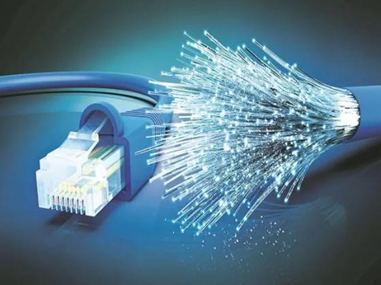
About:
- Now, Broadband is defined as a data connection that is able to support interactive services including Internet access.
- Earlier, connections with 512 Kbps were called Broadband Connections.
- It has the capability of a minimum download speed of 2 Mbps to an individual subscriber from the point of presence (POP) of the service provider.
https://www.thehindu.com/sci-tech/technology/india-broadband-definition-updated-to-2mbps-download-speed/article66466409.ece#:~:text=The%20definition%20of%20broadband%20now,gazette%20notification%20published%20on%20Thursday
Malawi - Edukemy Current Affairs
Why in news? Malawi in southern Africa is in the midst of a cholera outbreak.

About:
- It is a landlocked country in southeast Africa that was formerly known as Nyasaland.
- It is bordered by Zambia to the northwest, Tanzania to the northeast, and Mozambique to the east, south, and west.
- The country is nicknamed "The Warm Heart of Africa" because of the friendliness of the people.
https://www.kvpr.org/2023-02-03/malawi-faces-cholera-outbreak
Share the article
Get Latest Updates on Offers, Event dates, and free Mentorship sessions.

Get in touch with our Expert Academic Counsellors 👋
FAQs
UPSC Daily Current Affairs focuses on learning current events on a daily basis. An aspirant needs to study regular and updated information about current events, news, and relevant topics that are important for UPSC aspirants. It covers national and international affairs, government policies, socio-economic issues, science and technology advancements, and more.
UPSC Daily Current Affairs provides aspirants with a concise and comprehensive overview of the latest happenings and developments across various fields. It helps aspirants stay updated with current affairs and provides them with valuable insights and analysis, which are essential for answering questions in the UPSC examinations. It enhances their knowledge, analytical skills, and ability to connect current affairs with the UPSC syllabus.
UPSC Daily Current Affairs covers a wide range of topics, including politics, economics, science and technology, environment, social issues, governance, international relations, and more. It offers news summaries, in-depth analyses, editorials, opinion pieces, and relevant study materials. It also provides practice questions and quizzes to help aspirants test their understanding of current affairs.
Edukemy's UPSC Daily Current Affairs can be accessed through:
- UPSC Daily Current Affairs can be accessed through Current Affairs tab at the top of the Main Page of Edukemy.
- Edukemy Mobile app: The Daily Current Affairs can also be access through Edukemy Mobile App.
- Social media: Follow Edukemy’s official social media accounts or pages that provide UPSC Daily Current Affairs updates, including Facebook, Twitter, or Telegram channels.


